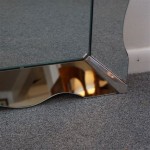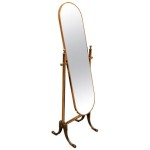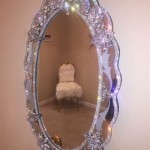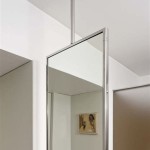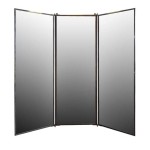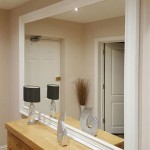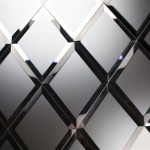How To Mirror a Broken MacBook Screen
A cracked or malfunctioning MacBook screen can severely impede productivity. Fortunately, mirroring the display to an external monitor or television offers a practical solution. This article details various methods to establish screen mirroring with a damaged MacBook display, enabling users to continue working or access their data.
Before starting, it's essential to identify the MacBook model and the available ports. Different models offer various connection options, including HDMI, USB-C, Thunderbolt, and Mini DisplayPort. Knowing the available ports will help determine the necessary cables and adapters.
Using an External Display with a Closed Clamshell Mode
MacBooks support a "closed clamshell" mode which allows mirroring to an external display while the laptop lid remains closed. This is especially useful when the built-in display is unusable. To utilize this feature, the MacBook must be connected to both power and an external display.
Connect the external display to the MacBook using the appropriate cable. Ensure the display is powered on and set to the correct input source. Once connected, close the MacBook lid. The display should automatically mirror to the external monitor. If not, wake the MacBook by briefly pressing any key, clicking the trackpad, or tapping the power button.
It's important to note that some older MacBooks may require an external keyboard and mouse to initially set up closed clamshell mode. If the MacBook does not automatically mirror to the external display after closing the lid, try connecting an external keyboard and mouse before closing the lid and repeating the process.
Mirroring with AirPlay
AirPlay provides a wireless mirroring solution for compatible Apple devices. This method requires an Apple TV or an AirPlay 2-compatible smart TV. The MacBook and the receiving device must be connected to the same Wi-Fi network.
To mirror using AirPlay, click the AirPlay icon in the menu bar (it resembles a rectangle with an upward-pointing triangle). Select the desired Apple TV or smart TV from the list of available devices. The MacBook display will then be mirrored wirelessly.
If the AirPlay icon is not visible in the menu bar, ensure that AirPlay is enabled in System Preferences. Navigate to Displays in System Preferences and check the "Show mirroring options in the menu bar when available" checkbox.
Factors such as network congestion and distance can affect the performance of AirPlay mirroring. A strong and stable Wi-Fi connection is recommended for optimal performance.
Utilizing Adapters and Cables
Various adapters and cables facilitate connecting a MacBook to different types of displays. For example, a USB-C to HDMI adapter can connect a MacBook with a USB-C port to an HDMI display. Similarly, a Mini DisplayPort to VGA adapter can be used to connect to a VGA display.
When choosing an adapter or cable, ensure it's compatible with the specific MacBook model and the external display. Using incorrect or low-quality adapters can lead to display issues or connection failures.
Connecting the adapter is straightforward. Plug the adapter into the respective port on the MacBook and connect the display cable to the adapter. Then, power on the display and select the correct input source. The MacBook display should mirror to the external display. If not, check the display settings in System Preferences.
Troubleshooting Mirroring Issues
If the MacBook display doesn't mirror to the external display, several troubleshooting steps can be taken. First, verify all cables and adapters are securely connected. Try disconnecting and reconnecting them to ensure a proper connection.
Next, restart both the MacBook and the external display. This can often resolve minor software glitches that may be interfering with the mirroring process.
Checking the display settings in System Preferences can also help. Navigate to Displays and ensure the correct display is selected and the mirroring option is enabled. The "Arrangement" tab allows users to configure the position and orientation of the external display relative to the MacBook's built-in display.
If the issue persists, try resetting the NVRAM (Non-Volatile Random-Access Memory). This can resolve issues related to display settings and other system configurations.
Finally, if none of these steps resolve the issue, it may indicate a hardware problem with either the MacBook or the external display. Consulting Apple Support or a qualified technician is recommended for further diagnosis and repair.
Successfully mirroring a broken MacBook screen can provide uninterrupted access to data and applications. Choosing the right method depends on the available equipment and the specific MacBook model. Understanding the different options and troubleshooting techniques can empower users to effectively manage a damaged display and maintain productivity.

How To Use A Macbook With Broken Screen Stellar

How To Use A Macbook With Broken Screen Stellar

How To Mirror Android Broken Screen Pc Mac Best Solution

How To Use A Mac Laptop Or Imac With Broken Display Macworld

Mirror Displays On The Mac With A Keyboard Shortcut Osxdaily

How To Fix A Broken Macbook Pro Screen

Broken Macbook Pro Screen Turn It Into A Desktop Mac Osxdaily

How To Mirror 2024 Macbook Tv Monitor

How To Mirror 2024 Macbook Tv Monitor

Useful Ways To Mirror Broken Screen Android Pc

